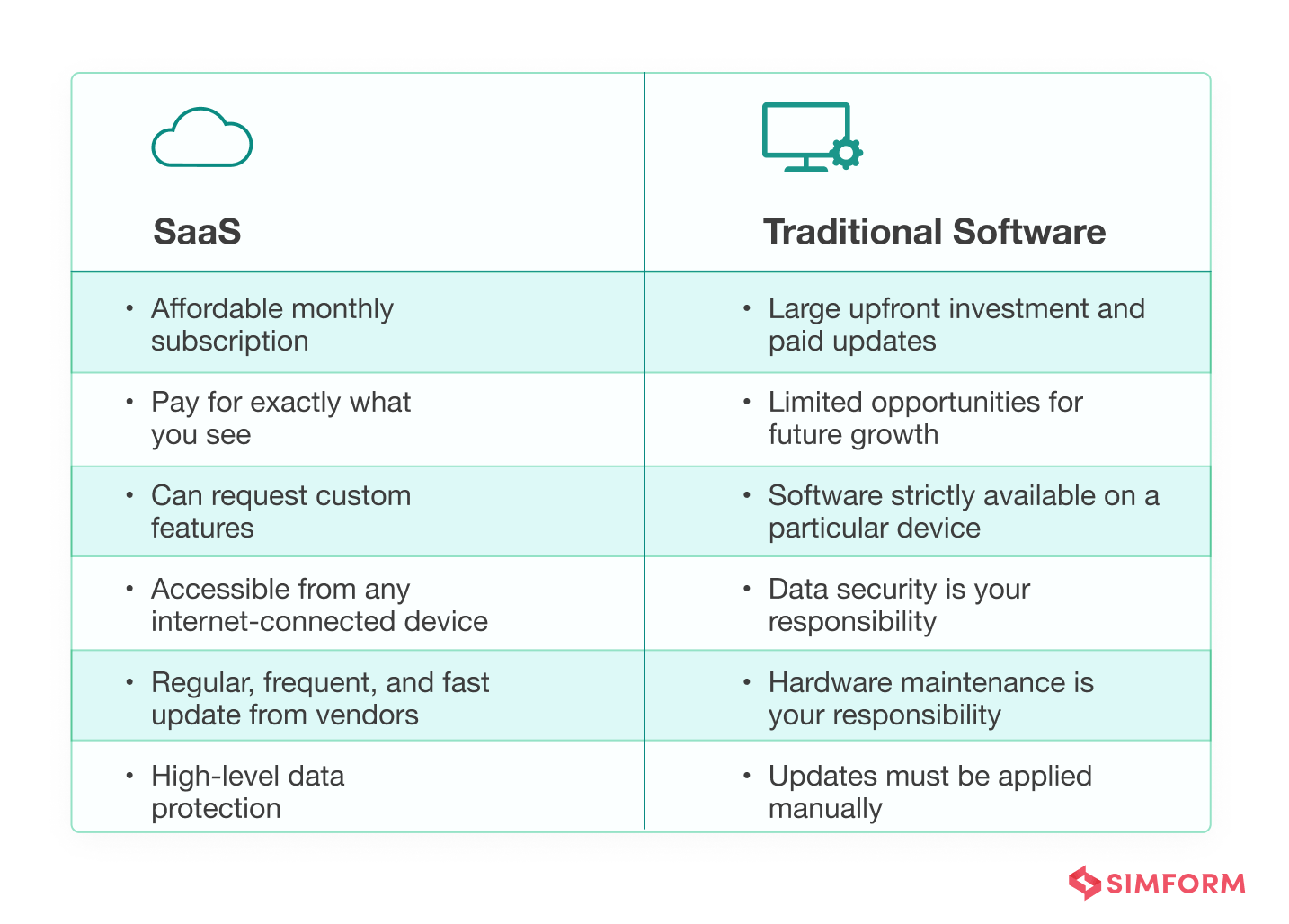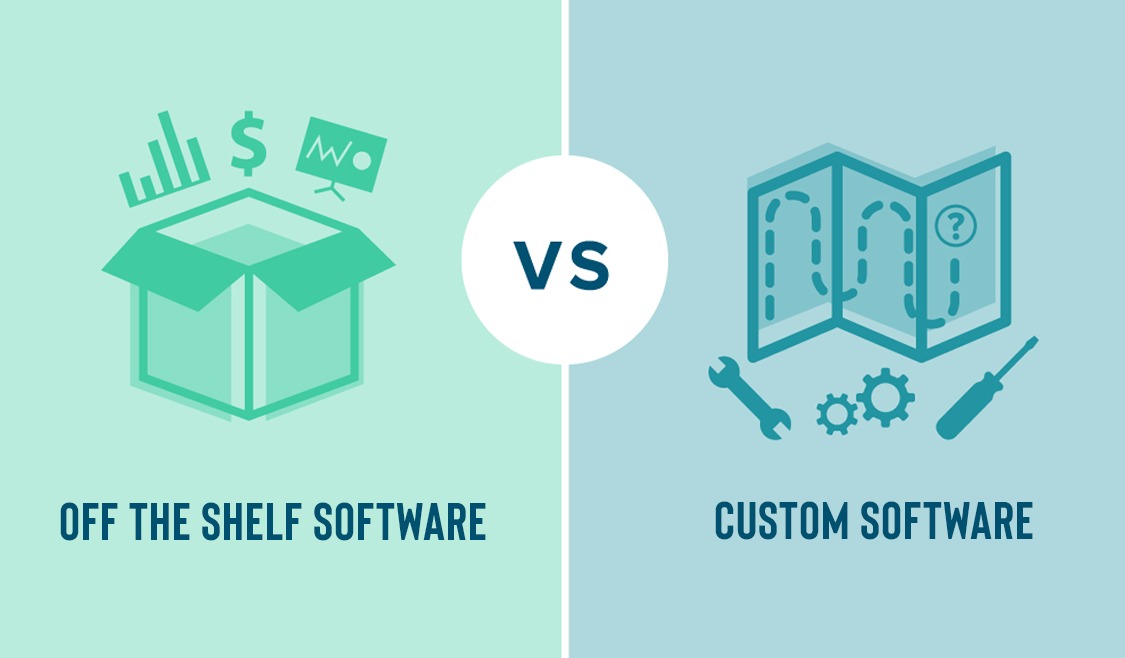Yes, SaaS software can be customized. Many SaaS providers offer ways to tailor their software to meet specific needs.
This flexibility is key to SaaS’s popularity. In today’s digital world, businesses need software that fits their unique processes. SaaS, or Software as a Service, offers many benefits, including customization. Customizing SaaS software can help businesses work more efficiently and meet their goals.
Whether you need to add features, change the interface, or integrate with other systems, SaaS can be adjusted. This makes it a powerful tool for businesses of all sizes. In this blog post, we will explore how SaaS software can be customized and what benefits this brings.

Credit: www.simform.com
Introduction To Saas Customization
Software as a Service (SaaS) has become a popular solution for businesses. It offers flexibility, scalability, and cost-effectiveness. But can SaaS software be customized to meet specific needs? This blog explores the possibilities of SaaS customization.
What Is Saas?
SaaS stands for Software as a Service. It’s a cloud-based service. Users access software applications over the internet. They don’t need to install or maintain software on their own computers. Instead, they subscribe to a service provided by a third-party vendor.
Importance Of Customization
Every business has unique needs. A one-size-fits-all approach rarely works. Customization allows businesses to tailor software to their specific requirements. This ensures the software fits their workflow perfectly.
Customization can improve efficiency. It helps in automating specific tasks. It also provides features that are critical to the business. This leads to better performance and satisfaction.
Another benefit is competitive advantage. Custom software can offer unique features. These features can set a business apart from its competitors. This can lead to better customer retention and growth.
SaaS customization can include various elements. User interface changes, specific feature additions, and third-party integrations are common examples. Understanding these options can help businesses make the most of their SaaS solutions.
Benefits Of Customizing Saas
Customizing SaaS software can offer several benefits. These include an enhanced user experience and improved efficiency. Customization can help businesses align the software with their unique needs, making it a more powerful tool.
Enhanced User Experience
Customizing SaaS allows you to tailor the interface and features. This makes the software more intuitive for users. A simpler interface can reduce the learning curve. Users can find what they need faster, improving their daily workflow.
Another advantage is the ability to add or remove features. This ensures that the software only has the functions necessary for your team. As a result, users spend less time navigating through unnecessary options. They focus more on their core tasks.
Improved Efficiency
Customized SaaS software can automate repetitive tasks. This reduces the chances of human error and increases productivity. It allows employees to focus on more complex tasks, which can improve overall performance.
Additionally, integration with other tools is easier. This creates a seamless workflow. Data can be shared between systems without manual input. This saves time and minimizes errors.
| Benefit | Description |
|---|---|
| Enhanced User Experience | Intuitive interface, tailored features, reduced learning curve |
| Improved Efficiency | Automated tasks, seamless tool integration, reduced errors |
Common Customization Options
Customizing SaaS software offers many benefits. Users can tailor their experience, improve workflow, and increase productivity. Below are some common customization options available.
User Interface Adjustments
The user interface (UI) is crucial for a seamless experience. SaaS platforms often allow users to customize the UI to meet their needs. This could include:
- Changing themes or color schemes
- Adjusting font sizes and styles
- Customizing dashboard layouts
- Adding or removing widgets
These adjustments help users feel comfortable and improve usability.
Workflow Automation
Workflow automation streamlines repetitive tasks. This saves time and reduces errors. Common workflow automation options include:
| Automation Type | Examples |
|---|---|
| Email Notifications | Send alerts for new tasks or deadlines |
| Data Sync | Automatically update records across systems |
| Task Assignments | Automatically assign tasks based on rules |
Automation helps teams work efficiently. It ensures consistency in processes.
Technical Aspects Of Customization
Customizing SaaS software involves various technical aspects. These aspects ensure the software meets specific business needs. Two main methods for this are API integration and custom code. Both methods offer unique benefits and challenges.
Api Integration
API integration allows different software systems to communicate. This enables the SaaS software to interact with other tools you use.
Benefits of API Integration:
- Easy data transfer between systems
- Automated workflows
- Enhanced functionality
Challenges of API Integration:
- Compatibility issues
- Security concerns
- Maintenance requirements
An example of API integration is connecting a CRM with an email marketing tool. This allows seamless data sharing between the two platforms.
Custom Code
Custom code involves writing specific code to modify the SaaS software. This method offers greater flexibility.
Benefits of Custom Code:
- Tailored features
- Unique functionality
- Enhanced user experience
Challenges of Custom Code:
- Higher development costs
- Longer implementation time
- Ongoing maintenance
Custom code is ideal for businesses with unique requirements. It allows for precise adjustments to the software.
Challenges In Saas Customization
SaaS software offers many benefits. However, customizing it can present significant challenges. These challenges often revolve around compatibility issues and security concerns. Understanding these hurdles can help businesses make informed decisions.
Compatibility Issues
Customizing SaaS software can lead to compatibility issues. Different businesses use various tools and systems. Integrating these with a SaaS platform can be tricky.
- Some tools may not work well with SaaS software.
- Data formats may differ, causing integration problems.
- Legacy systems may not support new SaaS features.
Compatibility problems can disrupt business operations. To avoid issues, businesses need thorough testing before full implementation.
Security Concerns
Security is a major concern in SaaS customization. Custom changes can expose vulnerabilities.
Common security risks include:
- Unauthorized access to sensitive data.
- Data breaches due to weak security measures.
- Insecure integration with third-party tools.
Businesses must ensure strong security protocols. These include encryption, regular audits, and secure coding practices.
Addressing these challenges is crucial for successful SaaS customization. Businesses need to plan carefully to overcome these hurdles.
Best Practices For Saas Customization
Customizing SaaS software can bring significant benefits to your business. Tailored solutions can improve efficiency and user satisfaction. But you need to follow best practices to ensure successful customization. Let’s explore some of these practices to help you get the most out of your SaaS software.
Involve Stakeholders
Engage key stakeholders from the beginning. Their input can guide the customization process. They understand the needs and challenges of the business. Include them in planning and decision-making. This ensures the customized solution meets everyone’s needs.
Regular Updates
Implement regular updates to your customized SaaS software. This keeps the system running smoothly. Updates can fix bugs and improve functionality. Schedule updates to avoid disrupting daily operations. Communicate with users about upcoming changes. This helps them prepare and adapt.
Case Studies Of Successful Customization
Customizing SaaS software can transform a business’s efficiency. Different companies show how tailored solutions meet specific needs. Below, we explore two examples of successful customization in SaaS software.
Example 1: Crm System
A mid-sized retail company needed a customized CRM system. They wanted to track customer interactions and sales more effectively. By customizing their CRM, they added features like:
- Automated follow-up emails
- Personalized customer profiles
- Integrated sales analytics
These custom features helped the company improve customer relations. Sales teams could now access all customer data in one place. They also gained insights into customer behavior. This led to better-targeted marketing campaigns. The result was a 20% increase in sales within six months.
Example 2: E-commerce Platform
An online store needed a more robust e-commerce platform. They wanted to enhance user experience and streamline operations. Customizations included:
- Advanced search filters
- Personalized product recommendations
- Seamless payment gateway integration
With these enhancements, the store saw an increase in customer engagement. Shoppers could find products faster and enjoyed personalized suggestions. The improved payment system reduced cart abandonment rates. Within a year, their revenue grew by 30%.
| Feature | Benefit |
|---|---|
| Advanced search filters | Faster product discovery |
| Personalized recommendations | Increased customer satisfaction |
| Seamless payment integration | Reduced cart abandonment |
These examples highlight the power of SaaS customization. It can address unique business needs and drive growth. Consider customizing your SaaS solutions for better results.

Credit: itechindia.co
Future Trends In Saas Customization
The future of SaaS customization looks promising. More businesses want tailored software solutions. SaaS providers now focus on creating flexible and adaptable products. This trend leads to more personalization and efficiency. Let’s explore the key trends shaping SaaS customization.
Ai And Machine Learning
Artificial Intelligence (AI) and Machine Learning (ML) are major trends in SaaS. These technologies allow software to learn and adapt. AI can analyze user behavior and preferences. This helps in providing personalized experiences. ML algorithms predict user needs and suggest relevant features.
For example, a CRM SaaS can use AI to suggest the best time to contact a lead. This improves customer engagement and sales. AI and ML make SaaS more intuitive and user-friendly.
Increased Personalization
Personalization is crucial for modern SaaS solutions. Users expect software to meet their specific needs. Customizable dashboards and reports are popular features. These allow users to see the most relevant information at a glance.
Many SaaS providers offer modular solutions. Users can add or remove features based on their needs. This flexibility ensures that the software grows with the business. Increased personalization leads to better user satisfaction and retention.
Here is a table showing the benefits of increased personalization in SaaS:
| Benefit | Description |
|---|---|
| Enhanced User Experience | Users get a tailored experience, improving satisfaction. |
| Higher Efficiency | Custom features reduce time spent on irrelevant tasks. |
| Scalability | Software adapts as the business grows. |

Credit: www.itmagination.com
Frequently Asked Questions
Can Saas Software Be Customized?
Yes, SaaS software can be customized. Providers offer various customization options. These options include user interface changes and feature additions. Customization ensures the software meets specific business needs.
How Do You Customize Saas Software?
Customization is done through configuration settings or APIs. Users can modify the interface and features. Some SaaS providers offer custom development services for deeper customization.
What Are The Benefits Of Customizing Saas?
Customization aligns the software with business processes. It improves user experience and efficiency. Tailored features can enhance productivity and meet unique requirements.
Are There Limits To Saas Customization?
Yes, there are limits. Customization depends on the provider’s flexibility. Some features might be restricted. Always check the customization capabilities before choosing a SaaS provider.
Conclusion
Customizing SaaS software can meet unique business needs. It offers flexibility and scalability. Businesses can tailor features and user interfaces. This leads to improved efficiency and user satisfaction. Customization helps in staying competitive. It also ensures the software grows with your business.
Investing in custom SaaS solutions can be worthwhile. It saves time and resources in the long run. Always choose a provider that supports customization. This ensures your software remains relevant.